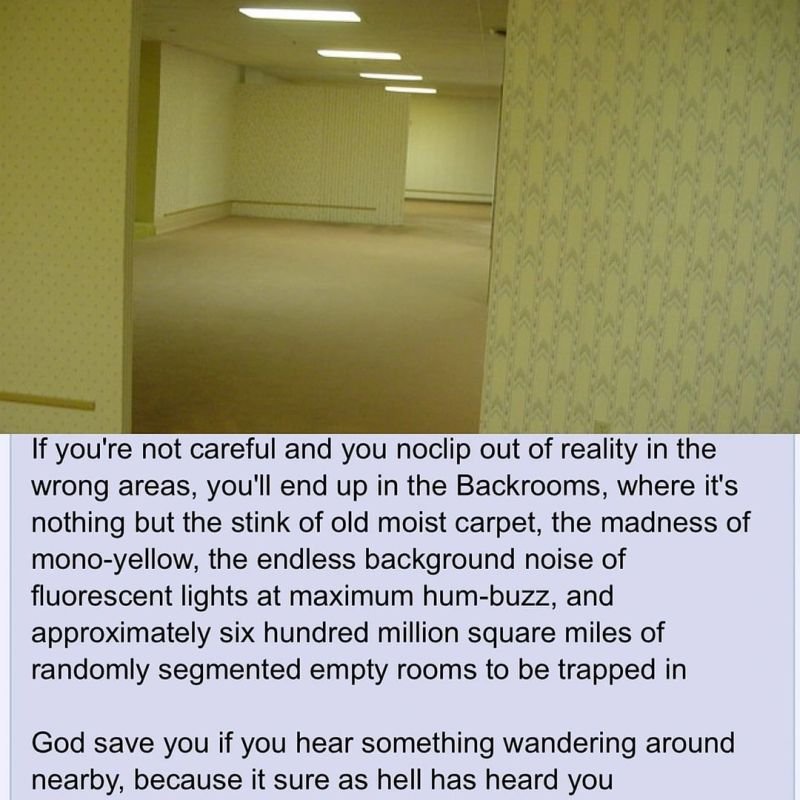the backrooms: liminal aesthetics of the digital age
2019, 4chan
Creepypasta is digital folklore. It is the genre of Internet horror fiction. The name is a combination of the words "creepy" and "copypasta”. Copypasta is slang for any kind of text or verbiage that gets copied and pasted repeatedly across the Internet. Slenderman is a well known and early example of creepypasta. Other popular creepypastas include the Russian Sleep Experiment as well as the infamous Momo Challenge hoax.
The Backrooms, a near endless environment of yellow wallpapered rooms, wet carpet, and buzzing, fluorescent lights, is the most representative example of liminal space and the inherent fears and displacement characterized in the digital age. It is the genre’s most potent and revealing artifact, emblematic not only of a shift in storytelling but of a shift in authorship, and affect in a digital media environment.
A single image posted to 4chan in 2019 spiraled into a distributed narrative: Built by anonymous users across forums, Reddit, YouTube, and now even a forthcoming Hollywood film, it’s a cultural touchpoint that evolved and extended outward from creepypasta as a case study in liminal aesthetics and collective authorship. What followed was not the typical lifecycle of a story, but a decentralized cultural construction, written by no one and everyone at the same time. A visual language emerged, composed of low-quality digital imagery. This "found footage" example is one of the more popular explorations of the concept: https://lnkd.in/gtyz8xhi
The Backrooms isn't a traditional horror narrative. It is simply an environment. A glitch in space. A digital folk myth that thrives by bypassing the plot and going straight to mood, unease, and recognition. It demonstrates how media today is not just consumed, but co-created and distributed. It’s the architecture of anxiety, not an embodiment of a horror character such as Slenderman. It's the ground - not the figure, rendered in JPEGs, YouTube videos and Internet lore.
The Backrooms exist in liminal space - the media theory model of our time, for the age of collaborative myth-making.
Liminal space is where art resides today. Not on the white walls of a gallery. The concept of an art gallery (formerly a salon) is a 19th-century construction that attempted to create a liminal space. The white gallery walls attempted to position the work of art in its own context. A step removed from the confines of a typical room. It aspired to be an antiseptic and unbiased ground for which the object of art exists.
The art of our time emerges from true liminal space - digital space. It emanates from the corners of the Internet into a public, collaborative forum. Actual liminal spaces, within the Internet, are neither fully private nor public, coded by platform logic, emerging organically in the flow of shared attention.
The Backrooms is the perfect allegory for a media ecosystem that is always on, yet always slightly off. In our world of infinite scroll, The Backrooms is what it feels like to get lost. And in that feeling, we recognize ourselves.
